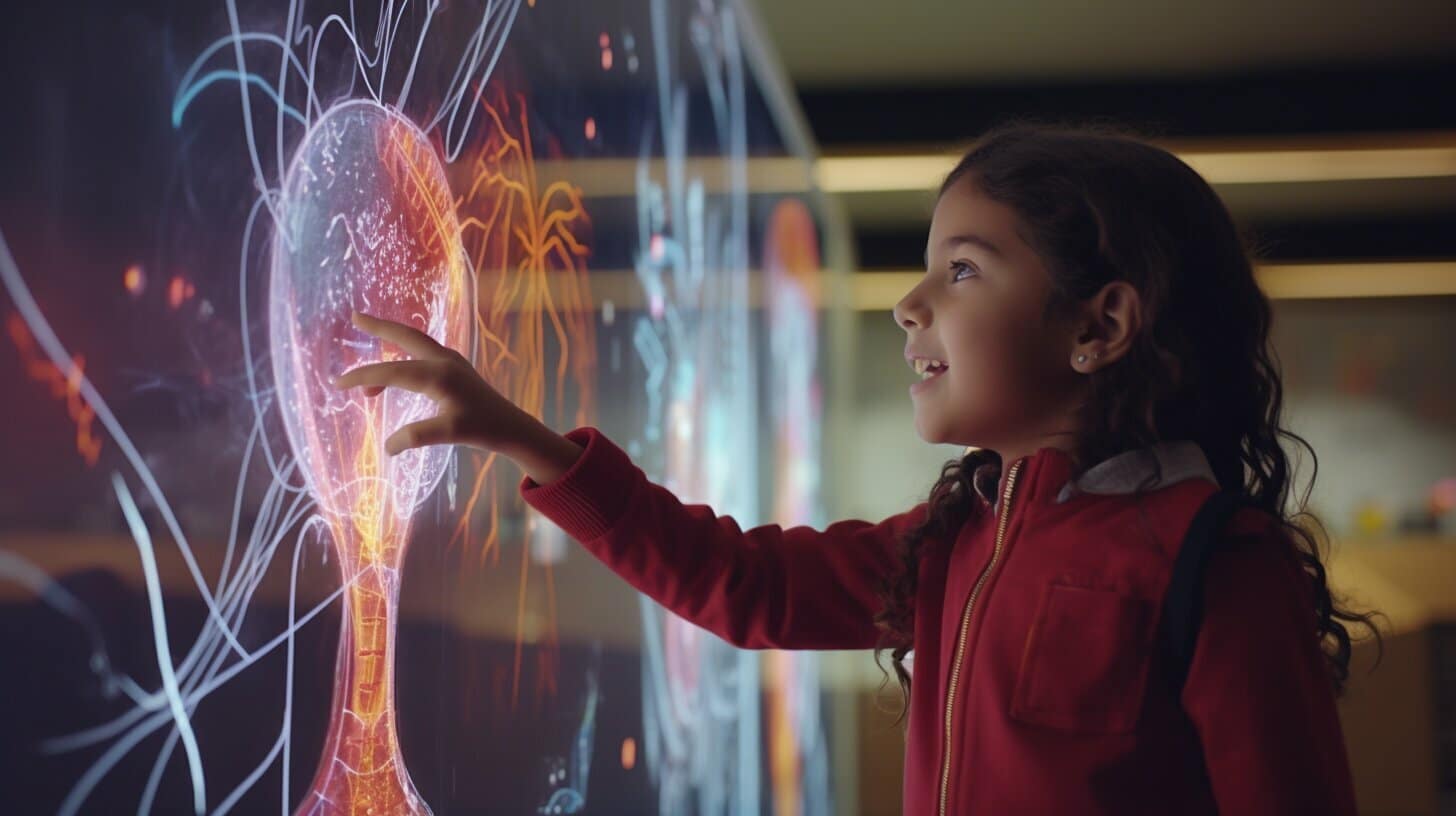Communicating traumatic experiences to children can be challenging, but it’s essential to their well-being. As a parent, guardian, or caregiver, you play a crucial role in helping children understand trauma and develop the skills to cope with it. In this section, we’ll explore effective strategies for explaining trauma to children in a supportive and gentle manner, using child-friendly language and techniques that foster understanding and emotional support.
Key Takeaways:
- Explaining trauma to children is important for their emotional well-being and helps them develop healthy coping mechanisms.
- Creating a safe and trusting environment is crucial for children to feel comfortable discussing traumatic experiences.
- Using age-appropriate language and visual aids can help children better understand and process traumatic experiences.
- Active listening and validating children’s feelings are essential in supporting children through difficult experiences.
- Providing reassurance and support can help children develop resilience in the face of adversity.
- Seeking professional help may be necessary in addressing trauma in children.
Why is it Important to Explain Trauma to Children?
Helping children understand trauma is crucial for their overall well-being. By explaining traumatic experiences to children, you can offer them the clarity and understanding they need to make sense of their emotions, thoughts, and reactions. Children who have a clear understanding of what has happened to them are better equipped to cope with their experiences and build resilience for the future.
Without proper education and communication, children can develop misconceptions and beliefs about their experiences, leading to confusion, fear, and potentially long-term negative effects. It’s essential to provide children with the information they need to process and manage their emotions, so they can feel safe, understood, and supported.

Explaining trauma to children is not an easy task, but it is necessary. By taking a supportive and gentle approach, you can help children develop a healthy understanding of their experiences, which lays the foundation for their future mental health and emotional well-being.
Creating a Safe and Trusting Environment
Explaining trauma to children requires a safe and trusting environment. As a caregiver, it’s important to prepare yourself mentally and emotionally before having this conversation. Take a moment to assess your own feelings and reactions to the traumatic event, and seek support from a therapist or counselor if necessary.
When you’re ready to talk with your child, find a quiet space where you won’t be interrupted. Sit down with your child and give them your full attention. Let them know that this is a safe space for them to share their thoughts and feelings.
Start the conversation by asking open-ended questions like, “How are you feeling about what happened?” or “Can you tell me what you remember about that day?” Be patient and allow your child to talk at their own pace. Don’t push for details they’re not ready to share yet.
Establishing Trust
Establishing trust is key to creating a safe space. When speaking with your child, maintain eye contact and be fully present. Acknowledge their feelings and let them know you believe them. Use validating statements like, “I can see why you feel that way” or “It’s okay to be scared or confused when something scary happens.
It’s also important to be honest with your child. Let them know that you may not have all the answers, but that you’re there to listen and support them. Be clear about what you can and can’t do, and follow through on any promises you make. This will help your child feel heard and supported.
Encouraging Open Communication
Encouraging open communication is essential in creating a safe and trusting environment. Let your child know that they can come to you with any questions or concerns they have, even if it’s weeks or months from now. Revisit the conversation periodically to check in and see how they’re doing.
If your child doesn’t want to talk about the traumatic event, don’t force them. Let them know that it’s okay to take their time and that you’ll be there for them whenever they’re ready.

Creating a safe and trusting environment is crucial when explaining trauma to children. By establishing trust, encouraging open communication, and being there to listen and support your child, you can help them process their experience and develop healthy coping mechanisms.
Using Age-Appropriate Language and Concepts
Children may not have the same grasp of complex concepts as adults, making it important to adapt your language when explaining trauma to them. Avoid using words or phrases that may be confusing or distressing, and instead opt for language that is simple, clear, and easy to understand.
When discussing traumatic experiences with younger children, you can use metaphors or analogies to help them comprehend difficult concepts. For example, you could compare a traumatic event to a storm, explaining that just as a storm can be scary and overwhelming, so too can a traumatic experience.
It’s also important to consider the child’s age and level of development when choosing your language. For younger children, you may need to simplify your explanations and focus on concrete details, while older children may require more complex explanations to fully understand the situation.
Visual aids, such as diagrams or drawings, can also be helpful in conveying information in an age-appropriate way. These can help children visualize abstract concepts and make sense of their experiences.

Remember: Using age-appropriate language and concepts can help children understand and process traumatic experiences more effectively.
Using Visual Aids and Storytelling
Children are visual learners, and incorporating visual aids can be an effective way to help them understand and process traumatic experiences. Consider using drawings, diagrams, or age-appropriate books to illustrate and narrate the event. This can make it easier for children to grasp and connect with the information.
Storytelling is also a powerful tool for engaging children and helping them process trauma. Consider telling a story that relates to the child’s experience, highlighting positive outcomes and coping strategies. This can help children feel more comfortable sharing their own thoughts and feelings.

By using visual aids and storytelling, you can create a safe and engaging environment for children to understand and process their trauma. However, it is important to ensure that the materials and language used are age-appropriate and sensitive to the child’s needs.
Listening and Validating Children’s Feelings
When discussing trauma with children, it’s crucial to listen actively and validate their feelings. Pay attention to their nonverbal cues and encourage them to express themselves in their own words. By doing so, you create a safe and supportive environment that fosters emotional resilience and encourages healing.
Start by being present and fully engaged in the conversation. Avoid interrupting or minimizing their experiences, and instead, use open-ended questions to encourage them to share. Focus on the child’s emotions and feelings, rather than the details of the event itself. This can help them feel heard and understood and validate their experiences.
It’s important to respond to their emotions empathetically, showing that you understand and care about how they feel. Use phrases like “That must have been really scary for you” or “I’m so sorry that you had to go through that.” This helps them feel validated and reassured that their emotions are normal and understandable.

It’s also important to address any misconceptions or misunderstandings they may have developed about themselves or the traumatic event. This can help them gain a better understanding of their experiences and develop healthy coping strategies. For example, if a child believes that the trauma was their fault, you can reassure them that it was not their fault and help them understand that what happened was beyond their control.
By actively listening and validating children’s feelings, you can help them process and move forward from traumatic experiences. This establishes a foundation of trust and emotional support, which can help them cope with future challenges.
Providing Reassurance and Support
As a caregiver, it’s important to be a consistent source of reassurance and support for children who have experienced trauma. Remind your child that they are loved and valued, and that what happened was not their fault. Let them know that it’s okay to feel upset, angry, or scared, and that you are there to listen and support them through those emotions.
Be patient with your child as they process their feelings and work through their trauma. Encourage them to express themselves in healthy, non-destructive ways, such as through art, writing, or physical activity. Help them develop coping strategies, such as deep breathing or positive affirmations, that they can use when they feel overwhelmed.
Remember, providing reassurance and support is an ongoing process. Be prepared to offer comfort and validation as your child continues to process their experience and work towards healing.

“Trauma creates change you don’t choose. Healing is about creating change you do choose.” – Michelle Rosenthal
Seeking Professional Help when Necessary
If you feel that your child may need additional support in coping with trauma, don’t hesitate to seek professional help. While your emotional support and guidance are essential, trained therapists and counselors can offer specialized expertise in addressing trauma-related issues.
Some signs that your child may benefit from professional help include:
- Difficulty sleeping or nightmares
- Withdrawal from family, friends, or activities they previously enjoyed
- Aggressive behavior or outbursts
- Recurring thoughts or conversations about the traumatic event
- Physical symptoms such as headaches or stomachaches without a medical cause
It’s important to note that seeking professional help is not a sign of weakness or failure as a caregiver. Instead, it shows your dedication to helping your child heal and foster resilience in the face of adversity.
Remember, you don’t have to go through this alone. If you’re not sure where to start, talk to your child’s pediatrician or school counselor for guidance. They may be able to refer you to a qualified therapist or counselor who can provide support and resources tailored to your child’s needs.

Conclusion
Congratulations! You’ve learned valuable tips and techniques for explaining trauma to children in a supportive and gentle manner. By providing age-appropriate language, visual aids, and validating their feelings, you’re helping them understand their experiences and cope with the emotions that come with it.
Remember, creating a safe and trusting environment to talk about trauma is key, and seeking professional help when necessary is nothing to be ashamed of. By offering reassurance and support, you’re helping children build resilience and develop healthy coping mechanisms that will serve them throughout their lives.
Thank you for taking the time to learn how to support children through difficult experiences. Your efforts will make a positive impact on their lives.
FAQ
Q: Why is it important to explain trauma to children?
A: Explaining trauma to children is important because it helps them make sense of their experiences, reduce confusion and fear, and develop healthy coping mechanisms. It also helps address any potential long-term effects of unaddressed trauma in childhood.
Q: How can I create a safe and trusting environment for children to discuss trauma?
A: To create a safe and trusting environment, you can prepare yourself as a caregiver, set the stage for open conversation, and foster a safe space where children feel comfortable sharing their thoughts and feelings.
Q: How can I use age-appropriate language and concepts when explaining trauma to children?
A: It’s important to simplify complex ideas, adapt explanations based on the child’s age and development, and choose words and phrases that are easily understandable and relatable to them.
Q: How can visual aids and storytelling help in explaining trauma to children?
A: Visual aids such as drawings, diagrams, or age-appropriate books can be used to illustrate and narrate traumatic experiences, making it easier for children to grasp and process the information.
Q: How can I listen and validate children’s feelings when discussing trauma?
A: Active listening and validating children’s feelings are important techniques. Being present, empathetic, and non-judgmental can help children feel heard and understood. Addressing any misconceptions or beliefs they may have developed about themselves or the traumatic event is also crucial.
Q: How can I provide reassurance and support to children navigating trauma?
A: Providing reassurance and support involves being a consistent source of comfort, encouragement, and stability. Helping children develop healthy coping strategies and resilience in the face of adversity is key.
Q: When should I seek professional help for trauma in children?
A: It’s important to recognize signs that indicate the need for additional support. When necessary, seek help from therapists, counselors, or other qualified professionals who specialize in trauma in children.






